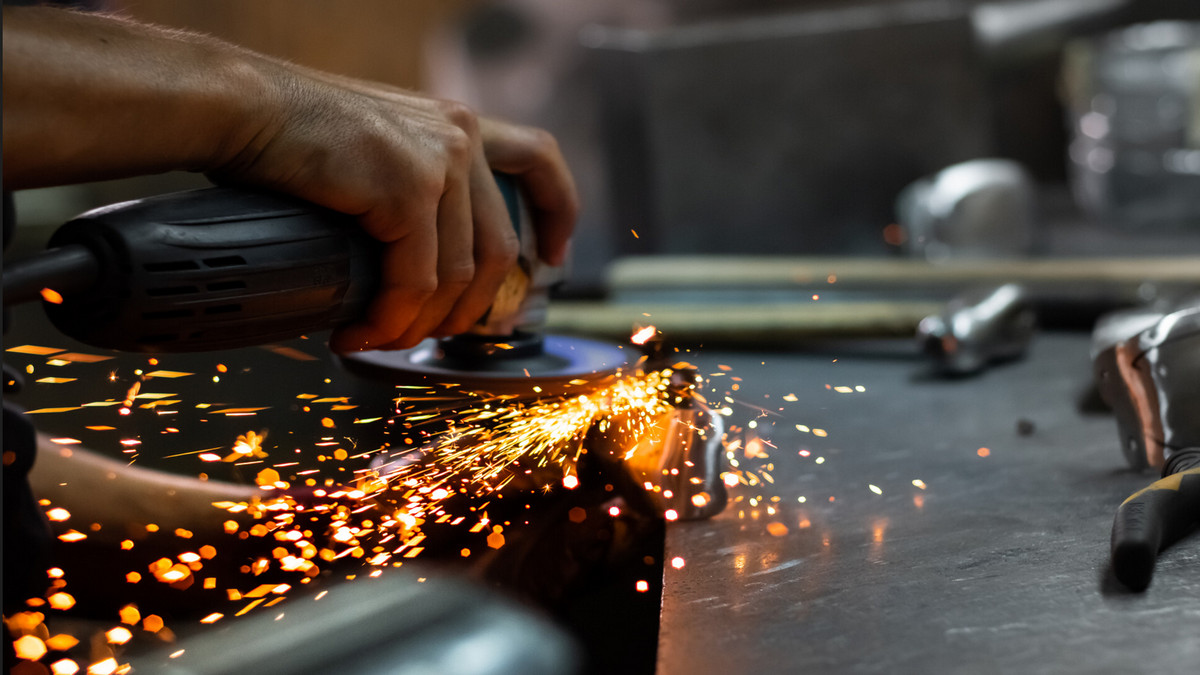Hardware can be seen everywhere and used everywhere in our lives, especially on some large and small machines, many parts of which are made of hardware. It can be used separately or as an auxiliary, such as hardware tools, hardware parts, daily hardware, construction hardware and security supplies, etc. Let's learn what hardware includes and the classification of hardware accessories.
Hardware is used to refer to the five metals of gold, silver, copper, iron and tin. Now it generally refers to metals. In the past, hardware was used to make metal objects such as knives, pieces, and works of art, but now the scope of manufacturing is much wider, and a detailed introduction will be given below.
What Does the Hardware Include?
Mechanical hardware:
Fasteners, rolling bearings, belts and chains, lubricating parts, keys and splines, keys and splines, welding equipment, lifting equipment, etc.
Building hardware:
Building profiles and structural parts, building doors and windows and their hardware accessories, nails and nets, plumbing equipment, fire-fighting equipment and automatic fire alarm devices, etc.
Electrical hardware:
General-purpose wires and cables, buttons and switches, relay contactors, electromagnetic starters and electromagnets, fuses, circuit breakers and leakage protectors, control transformers and signal lights, AC motors, electrical instruments, etc.
Hardware Tools:
Hand tools, civil tools, plumbing tools, decorative engineering hand tools, electrician tools, cutting tools, measuring tools, power tools, pneumatic tools, gardening tools, etc.
Hardware materials:
Steel materials, non-ferrous metal materials, non-metal materials, steel, etc.
Hardware machinery and equipment:
Tools, pumps, valves, food machinery, instrumentation processing, packaging material manufacturing.
Hardware products:
Alloys, metal processing materials, ordinary steel, stainless steel, wire, rope, metal mesh, scrap metal.
General accessories:
Fasteners, bearings, springs, seals, rigging, gears, molds, abrasives.
Hardware tools:
Daily tools, grinding, hydraulic, lifting, measuring, saw, hammer, screwdriver, wrench, electric, manual.
Architectural hardware:
Pneumatic, doors and windows, pipe fittings, kitchens, lamps, bathrooms, locks, construction, building materials, coatings.
Electronic and electrician:
Low-voltage electrical appliances, instruments, chargers, motors, connectors, anti-static, cables, insulating materials, electronic materials.
Classification of Hardware Accessories
Furniture hardware accessories:
Wood screws, hinges, handles, slides, partition pins, hanging parts, nails, heading machines, tooth rolling machines, multi-station machines, hardware feet, hardware racks, hardware handles, turntables, turntables, zippers, pneumatic rods, springs, furniture machinery, etc.
Cabinet hardware accessories:
Hinges, drawers, guide rails, steel drawers, pull baskets, hangers, sinks, pull baskets, spotlights, skirting boards, cutlery trays, hanging cabinet pendants, multi-functional columns, cabinet combiners, etc.
Mold hardware accessories:
Punch needle, punch, guide post, guide sleeve, thimble, cylinder, steel ball sleeve, ball sleeve, cage, outer guide post, independent guide post, self-lubricating plate, self-lubricating guide sleeve, no oil guide sleeve, no oil supply Skateboards, outer guide post components, etc.
Marine hardware accessories:
Shackles, turnbuckles, chucks, swivels, rings, pulleys, cable bolts, pipe bases, fairleads, bollards, etc.
Clothing hardware accessories:
Buttons, wire buckles, hook buckles, claw nails, rope buckles, pin buckles, military buckles, zipper pullers, five-claw buttons, fashion buttons, rope loops, sun buckles, glue buckles, stone buckles, zipper heads, belts Buckles, hollow nails, alloy buckles, alloy pull cards, signs, etc.
Luggage hardware accessories:
Rivets, aluminum bars, chains, steel rings, buttons, square rings, snap buttons, mushroom nails, hollow nails, wire rings, backpack racks, triangular rings, pentagonal rings, three-section rivets, luggage handles, dog buckles, pull cards, signs, etc.
Belt hardware accessories:
Belt buckle, belt pin buckle, alloy belt buckle, belt pair buckle, etc.
Door and window hardware:
Handle, handle, hinge, latch, handle, hinge, wind brace, pulley, door flower, throat hoop, lock box, bead, crescent lock, multi-point lock, transmission, puller, door closer, glass glue, Samsung lock, etc.
Photo frame hardware accessories:
Hooks, shrapnel, blades, picture brackets, support feet, brackets, sheets, loose-leaf, corner wrapping, straight nails, corner flowers, corner machines, code nails, corner nails, flannel, etc.
Metal stamping accessories:
Flat pads, discs, springs, shrapnel, cover, shells, signs, nameplates, marking, wire, forks, terminals, stamping parts, pulling arms, T-plates, etc.
Curtain wall hardware accessories:
Hanging clip, rigging, AB glue, connecting claw, curtain wall claw, glass claw, connecting joint, glass clip, glass glue, marble glue, foam strip, planting glue, adapter, dry pendant, handrail, chemical bolt , glass curtain wall, non-standard products, etc.
Hardware accessories:
Small accessories, mobile phone accessories, cartoon characters, wearing accessories, zodiac signs, zodiac signs, pendants, letter grains, letters, KT cats, Disney, mascots, other accessories, etc.
Decorative hardware accessories:
Weather strips, cabinet legs, door noses, air ducts, metal hangers, plugs, curtain rods, clothes hooks, clothes hangers, iron pipes, stainless steel pipes, plastic expansion pipes, rivets, cement nails, advertising nails, mirror nails, bolts, Screws, glass holders, glass clips, tapes, aluminum alloy ladders, goods brackets, etc.






.png)







